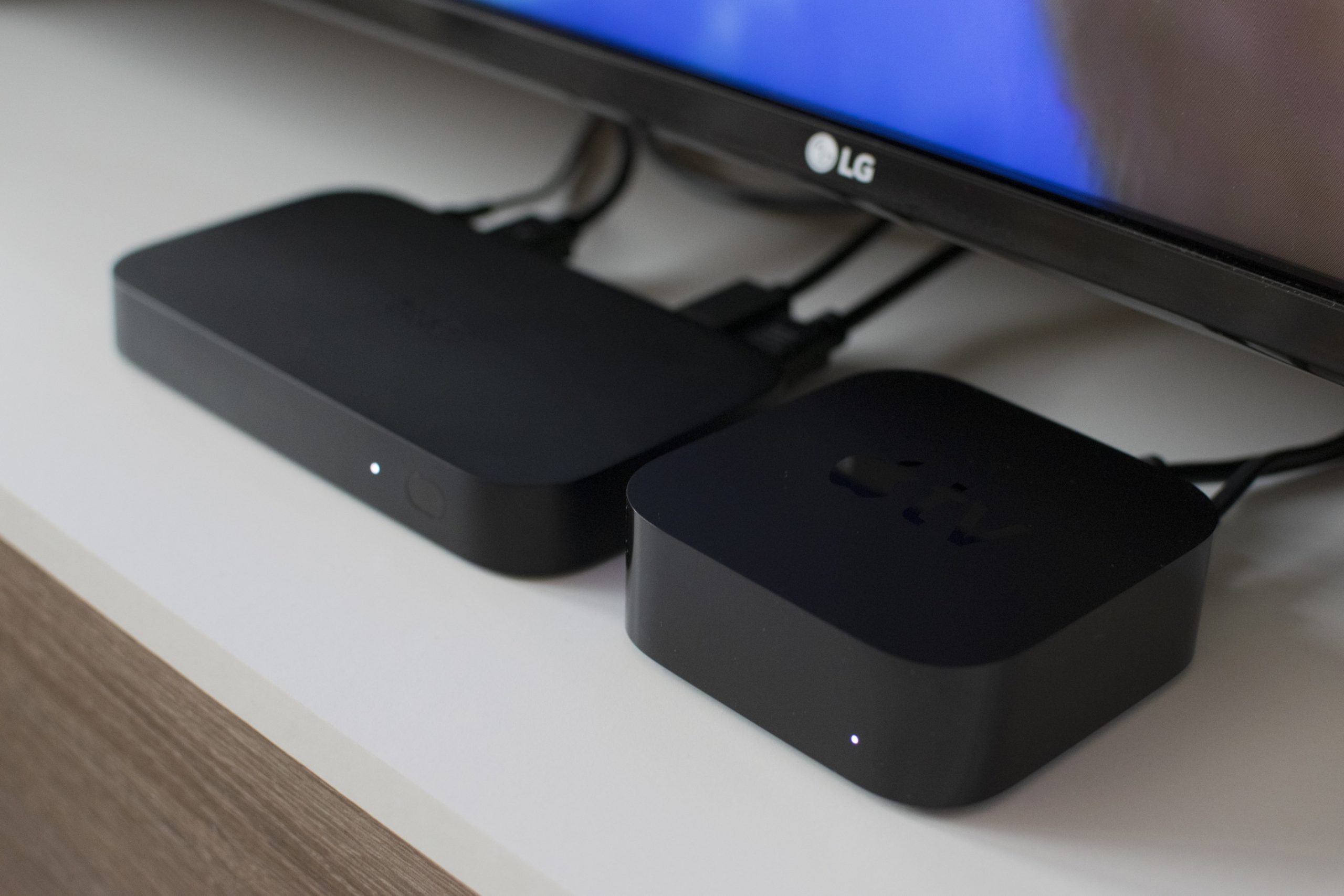

Luckily, because the strips bend, I was able to add some curves to the straightaways, and everything fit and aligned as intended. This was made slightly more complicated for me because I have a 55-inch TV, and Hue accidentally sent me the 65-inch strip. Then you just slot the flexible gradient strip into the groove in the guides. The system includes a few plastic guides with double-sided tape that you affix to the back of your TV. That done, my first task was to add the gradient strip to my TV. Setting up the system was simple, but I had a head start because I already had Hue lights scattered around my apartment (accounting for all of the lights in my living room), which meant my Hue Bridge was already set up with my Wi-Fi and account.
#HUE SYNC BOX TV#
These can all be looped into the sync box’s stream so the colors on your screen can extend not just behind your TV but also all around your room, which turned out to be way cooler than I thought it would be. The nice-to-haves are any other color-changing Hue lights around your living room. The flexible gradient lightstrip comes in three sizes and slots into channels that you affix to the back of your TV. That’s how the sync box will tell the gradient strip which colors to display and when. The mandatory piece is the $60 Philips Hue Bridge, which connects directly to your Wi-Fi router and acts as the central hub for all things Hue. There’s one more mandatory component (yup, this is getting expensive) as well as some other nice-to-haves. The idea is that the colors sort of bleed off of the screen and onto the wall behind it, making the screen feel larger. The 65-inch strip I ended up with contained roughly 80 individual LEDs, but they don’t all have to display the same color at the same time, which is how they are able to create a representation of the many colors being displayed on the edge of your TV screen. This is a flexible strip of LED lights that affixes to the back of your TV. The other major piece is the Play gradient lightstrip, which varies in price depending on the size needed for your TV ( $250 for the 55 inch, $270 for the 65 inch, and $300 for the 75 inch). The sync box itself sits between your HDMI devices and your TV and does all the lighting processing. It was somewhat limited when it first launched, but it now supports Dolby Vision, Atmos, and HDR10 Plus, so your programs should look and sound just as good as they normally do. It’s a clever design that greatly reduces lag so your lights stay tightly synced, though there is one major flaw to this method, which we’ll get into in a moment. This is how the system knows what’s on your TV screen so it can color match your lights all of the imagery is routed through it. On the back are four HDMI inputs and one HDMI output. It is, as the name suggests, a roughly 7 x 4 x 1-inch box. The $250 Play HDMI Sync Box is the brains of the operation. Let’s break this system down into its component parts. The Philips Hue HDMI Sync is available for 230 dollars in the US and 250 Euro in Europe from for $494.06 from Amazon Buy for $538.00 from Philips Hue
#HUE SYNC BOX UPDATE#
The software update is free and can be installed via the Hue Sync mobile app. Lastly, the box can now be configured to work with infrared commands from your TV remote control or Harmony universal remote. This lets you power on/off, start or stop light sync, switch HDMI, and switch between sync modes via voice commands to an external compatible device. The software update also adds support for popular voice assistants, including Amazon Alexa, Google Assistant and Apple Siri. A list of compatible devices is included in the table at the bottom. Not all devices are compatibleHowever, be aware that not all TVs and playback devices are supported, seemingly due to variances in Dolby Vision profiles. "From now onwards you can enjoy synchronized surround lighting effects from your Philips Hue lights when watching Dolby Vision or HDR10+ content with compatible TVs," the company announced. Philips Hue Sync Box updatedThe 'Philips Hue Play HDMI Sync Box' was launched in February 2019 but at the time it lacked support for Dolby Vision and HDR10+, meaning that it could not produce any light effects from a HDMI signal with Dolby Vision or HDR10+ passed through it. The update also adds support for voice assistants. The Philips Hue Sync box that lets you sync Philips Hue lights to the action on-screen now works with Dolby Vision and HDR10+ content.


 0 kommentar(er)
0 kommentar(er)
